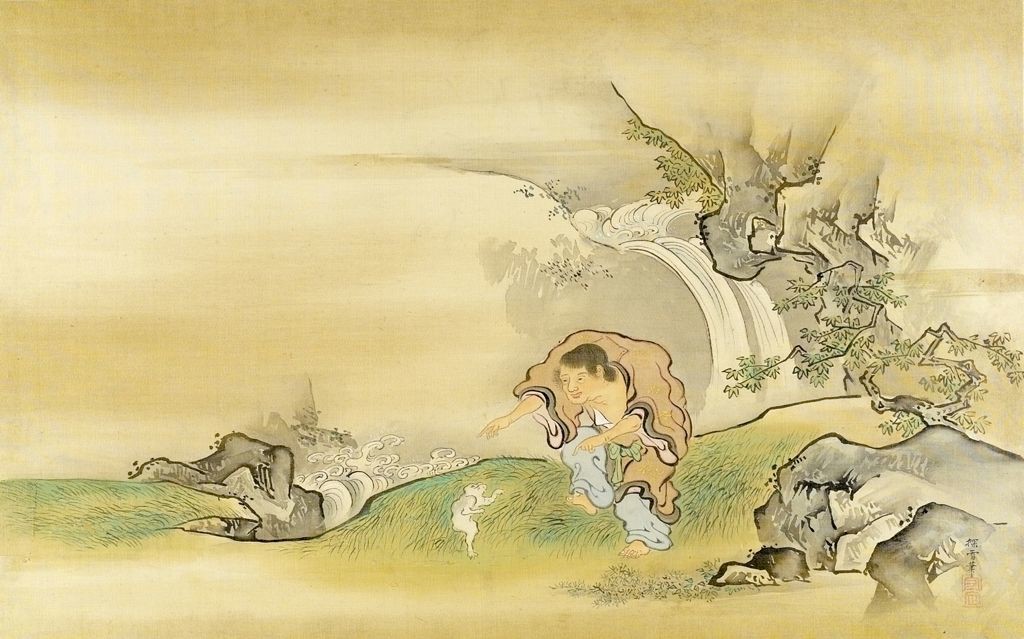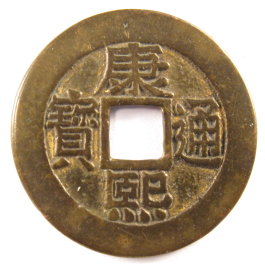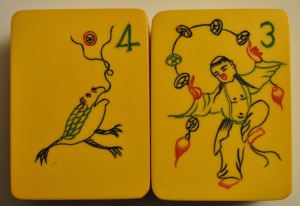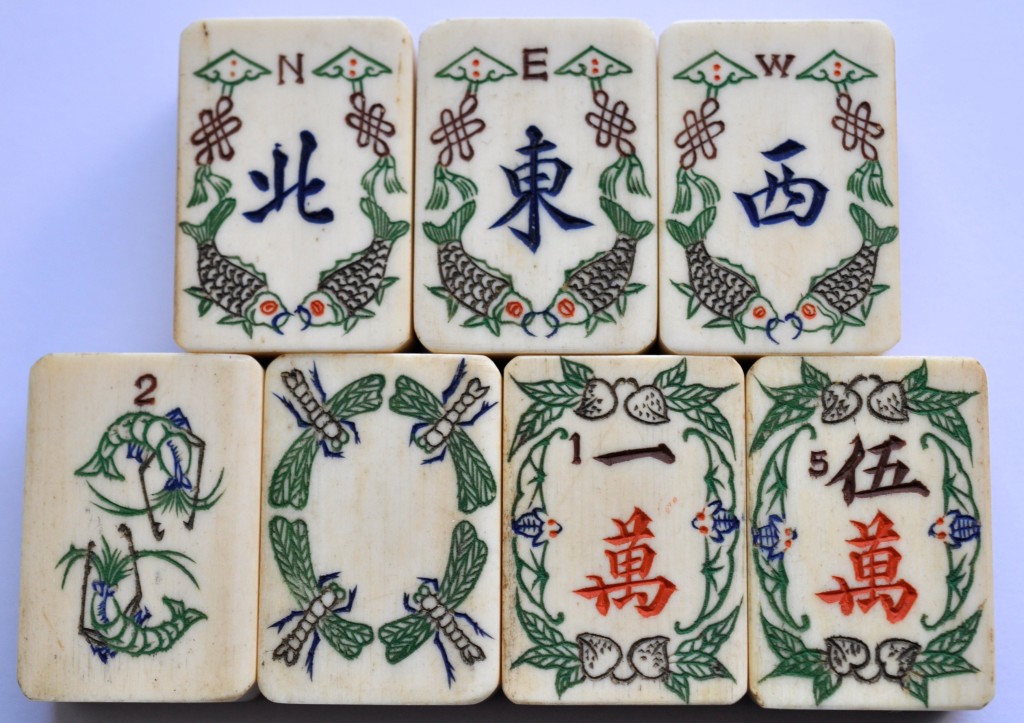The above image is from the Harvard Museum.
There's a Chinese legend about Liu Hai and the three legged toad.
From Primal Trek:
"Liu Hai and the Three-Legged Toad
Liu Hai (刘海) is one of the most popular members of the Chinese pantheon of charm figures and represents prosperity and wealth. There are a couple of versions of the story which have come down through history.
Liu Hai was a Minister of State during the 10th century in China. He was also a Taoist practitioner. One version of the story says that he became good friends with a three-legged toad who had the fabulous ability to whisk its owner to any destination.¹ This particular toad had a love not only for water but also for gold. If the toad happened to escape down a well, Liu Hai could make him come out by means of a line baited with gold coins.
The second version of the story is that the toad actually lived in a deep pool and exuded a poisonous vapor which harmed the people. Liu Hai is said to have hooked this ugly and venous creature with gold coins and then destroyed it.
The story of Liu Hai is frequently told as "Liu Hai playing with the Golden Toad". There is a hidden meaning here. The Chinese word for "toad" is chanchu (蟾蜍). Sometimes, Chinese will only say the first character chan (蟾). In some Chinese dialects, the character chan has a pronunciation very similar to qian (钱) which means "coin". Therefore, a storyteller reciting "Liu Hai playing with the Golden Toad" could be heard by listeners as "Liu Hai playing with the gold coins".
There are many plays on words in the Chinese language and thus in representations in art.
I love this old woodblock print, of Liu Hai and the toad. It is easy to see Liu Hai enticing the toad to give up his coin . It clearly shows us the string of coins that were the inspiration for the bamboo suit, with a string through that hollow center of the coin.
You can read more about that ancient way of carrying coins in this post
We often see Liu Hai on Mahjong tiles too, with his three legged toad and string of coins. On this delightful pair of tiles you can see the toad with a coin above his head, and Liu Hai with his string of coins, perhaps having just lured the toad out of the well.
Knots and thus tassels were important forms of art to the Chinese, and appear over and over, including as in the abbreviated form seen above with Liu Hai's string of coins, and on other Mahjong tiles as well.
Here's a photo I took to celebrate 2015:
You can see the tassels at the end of the endless knots in the Wind tiles. (Those of you who have been following this blog will also recognize the presence of two fish, representing marital harmony, and peaches and bats surrounding the Craks, symbols of longevity. The shrimp are symbols of flexibility. Dragonflies represent summer, but I just learned that when associated with White, as we see for the White Dragon, they represent pureness of character, one of the five happinesses: long life, good health, wealth, good moral character, and a natural death.)
More on tassels and knots can be found here:
http://www.chinahighlights.com/travelguide/culture/knot.htm
http://en.wikipedia.org/wiki/Chinese_knotting
You can now follow me on Twitter!
@MahJonggGregg
To learn more about Mah Jongg, you might want to take a look at this book that I wrote with Ann Israel, published by Tuttle. To see more about it:
www.mahjonggtheartof thegame.com
To order it click here:
http://www.barnesandnoble.com/w/mah-jongg-ann-israel/1118759459?ean=9784805313237
or here from Amazon
http://www.amazon.com/Mah-Jongg-Collectors-Guide-Tiles/dp/4805313234/ref=sr_1_7?ie=UTF8&qid=1414844427&sr=8-7&keywords=mah+jongg





